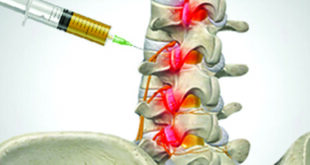For more than two decades, U.S. regulators cautioned both women and men that hormones might quietly court catastrophe. Every estrogen carton carried a stark black rectangle about clots, cancer, stroke and dementia; every testosterone insert warned of deadly cardiovascular events. In 2025—first in February and again in July—those old messages finally cracked.
 Two Breakthrough Votes
Two Breakthrough Votes
February 28, 2025 – Testosterone
After the 5,000-patient TRAVERSE trial showed no excess heart attacks or strokes, the FDA stripped all prescription testosterone products of language linking them to “major adverse cardiovascular events,” replacing it with a narrower blood-pressure caution.
July 17, 2025 – Menopausal Hormone Therapy
A 12-member FDA advisory panel called the current boxed warning on estrogen “out of step with the evidence” and voted:
Remove the warning entirely from low-dose vaginal estrogen (creams, tablets, rings) because systemic absorption is “negligible.”
Revise the warning on systemic estrogen to state that starting before age 60 or within 10 years of the final menstrual period lowers coronary events, fractures and all-cause mortality.
How We Got Here: 2002 — 2025
2002 – Women’s Health Initiative (WHI) triggers the original black box after excess clots and stroke in women who averaged 63 years old and began therapy late.
2014 – FDA orders a definitive cardiovascular-outcomes trial for testosterone.
2023 – TRAVERSE finishes without the feared signal, clearing a path for February’s label change.
2025 – Expert reassessment of estrogen closes the loop: timing and dose—not hormones themselves—determine risk.
After 23 years, regulators finally differentiate who uses hormones, when they start, and how they dose.
Why This Shift Matters
Genitourinary Syndrome of Menopause (GSM) affects up to half of post-menopausal women, yet fewer than one in four receive treatment because the black box frightens patients, pharmacists and even hospital formularies. Untreated GSM invites recurrent UTIs, painful sex and, in frail elders, urosepsis. Removing the warning could change millions of lives.
Metabolic “Window of Opportunity.” Women who begin systemic estrogen within ten years of menopause see up to 50 % lower all-cause mortality plus reductions in visceral fat, insulin resistance and LDL-C—outcomes that dovetail with our clinic’s own DXA and lab data.
Economic Ripples. Fewer fractures, myocardial infarctions and catheter-associated UTIs mean sizable savings for Medicare and private payers—strong incentive for insurers to follow the evidence rather than the fears of 2002.
Parallel Win for Men
Men battling functional hypogonadism—fatigue, depressed mood, shrinking muscle—now face only routine blood-pressure checks rather than a cancer-style black box. The change should cut insurance denials and destigmatize evidence-based testosterone replacement.
The Hormone Still Missing from Women’s Labels
Men just shed a black box, yet U.S. women still cannot fill an FDA-approved testosterone prescription. Androgen levels fall by half before age 40, and the International Society for the Study of Women’s Sexual Health guideline confirms that low-dose transdermal testosterone (about one-tenth the male dose) improves desire, arousal and orgasm without serious adverse events when serum levels stay in the female physiologic range. A pathway for a women-specific product is the logical next step.
What Clinicians and Patients Can Do Now
A New Era—If We Seize It
Black-box warnings were born to protect; instead, they often preserved fear. By distinguishing how, when and where hormones are used, the FDA signals that nuance—not blanket alarm—is the future of endocrine care. For women, that means reclaiming metabolic health, bone strength and sexual wellbeing, for men, therapy without a scarlet letter of cardiovascular doom.
Policy, however, is only a door; practice must walk through it. That requires prescribers who understand dose-response curves, pharmacies that stock vaginal estrogen without prior authorization, and patients who recognize that hot flashes, insomnia and vanishing muscle are treatable—not inevitable.
Turning Policy into Practice:
D&G Optimized Wellness and Hormones
At the forefront stand Dr. Jason De Leon, MD, and Dr. Rita Gillespie—the “D & G” behind D&G Optimized Wellness and Hormones. Both emergency-medicine-board-certified physicians, they are formally trained in bio-identical hormone replacement therapy. Their concierge clinic pairs precision dosing of estradiol, progesterone, thyroid support and testosterone with a relentless metabolic focus—lower visceral fat, sharper insulin sensitivity, stronger bones and a rekindled zest for life that patients describe as “getting my life back.”
August 1, 2025, they now offer added on-site, state-of-the-art DEXA scanning that quantifies visceral fat, lean mass and bone density in minutes. By overlaying these metrics with symptom scores and lab markers, D&G turns this regulatory watershed into tangible, trackable health transformations for every client who walks through the door.
The paradigm has shifted. Our charge now is simple: push practice guidelines so that every mid-life patient receives options shaped by data, not decades-old dogma.
863-899-2404
info@optimizedwellness.net
optimizedwellness.net
 Central Florida Health and Wellness Magazine Health and Wellness Articles of the Villages
Central Florida Health and Wellness Magazine Health and Wellness Articles of the Villages



